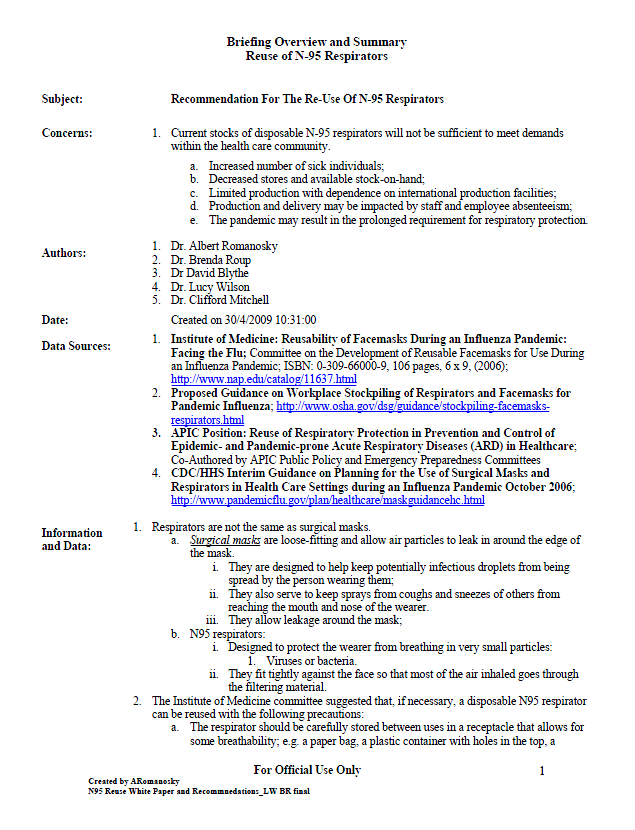 N95 Reuse White Paper and Recommendations
N95 Reuse White Paper and Recommendations
- 2 pages
- For Official Use Only
- November 13, 2009
1. Current stocks of disposable N-95 respirators will not be sufficient to meet demands within the health care community.
a. Increased number of sick individuals;
b. Decreased stores and available stock-on-hand;
c. Limited production with dependence on international production facilities;
d. Production and delivery may be impacted by staff and employee absenteeism;
e. The pandemic may result in the prolonged requirement for respiratory protection.
…
1. Respirators are not the same as surgical masks.
a. Surgical masks are loose-fitting and allow air particles to leak in around the edge of the mask.
i. They are designed to help keep potentially infectious droplets from being spread by the person wearing them;
ii. They also serve to keep sprays from coughs and sneezes of others from reaching the mouth and nose of the wearer.
iii. They allow leakage around the mask;
b. N95 respirators:
i. Designed to protect the wearer from breathing in very small particles:
1. Viruses or bacteria.
ii. They fit tightly against the face so that most of the air inhaled goes through the filtering material.
2. The Institute of Medicine committee suggested that, if necessary, a disposable N95 respirator can be reused with the following precautions:
a. The respirator should be carefully stored between uses in a receptacle that allows for some breathability; e.g. a paper bag, a plastic container with holes in the top, a closable plastic bag with holes in it.
b. The wearer should wash his or her hands before and after handling the respirator and the device used to shield it.
c. These steps are intended for reuse of a respirator by a single person.
